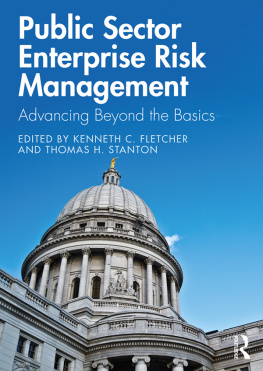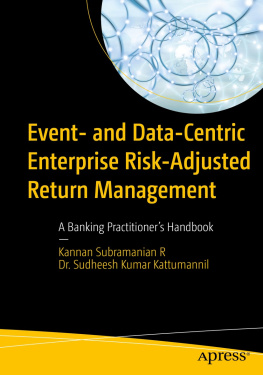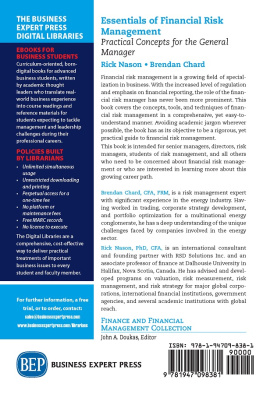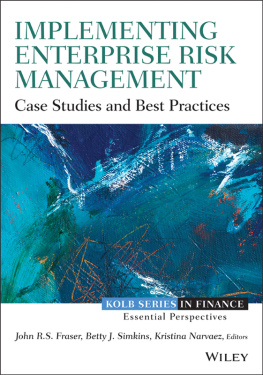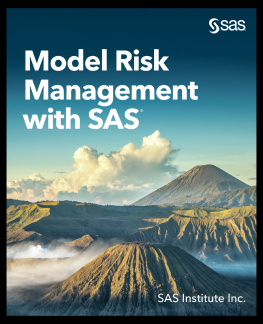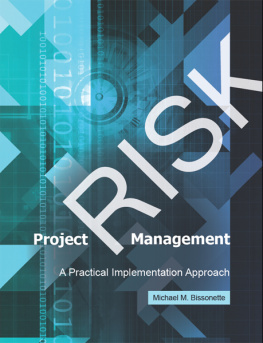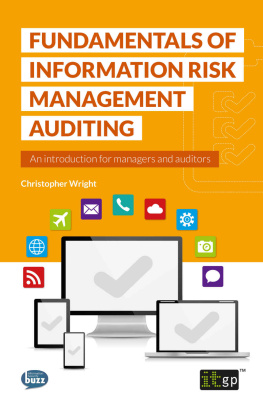Public Sector Enterprise Risk Management
Through a series of case studies and selected special topics, Public Sector Enterprise Risk Management presents examples from leading Enterprise Risk Management (ERM) programs on overcoming bureaucratic obstacles, developing a positive risk culture and making ERM a valuable part of day-to-day management. Specifically designed to help government risk managers, with concepts and approaches to help them advance risk management beyond the basics, the book:
- Provides a balanced mix of concepts, instruction and examples
- Addresses topics that go beyond the basics of enterprise risk management program design and implementation
- Includes insights from leading practitioners and other senior officials
Many government organizations can refer to the growing body of materials that provide examples of ERM processes and procedures. Far fewer reference materials and examples exist to help organizations develop a risk-mature organizational culture that is critical to the long-term success and strategic value that ERM represents to government organizations.
Public Sector Enterprise Risk Management begins to fill that void and is intended to help public sector risk managers overcome barriers that inhibit ERM from becoming an active contributor to major decisions that top officials must make.
Kenneth C. Fletcher is President, Kestrel Hawk Consulting, retired federal senior executive, and former Chief Risk Officer, Transportation Security Administration.
Thomas H. Stanton is Adjunct faculty, Johns Hopkins University, former president, Association for Federal Enterprise Risk Management, and former federal senior executive.
This book makes a major contribution to the advancement of Enterprise Risk Management in the public sector. It offers valuable conceptual frameworks and case studies and explores ways that agencies can improve their risk cultures, harmonize internal controls with ERM, and work with the Inspector General. There is nothing in the literature comparable to this book, which will be extremely useful for agencies at all levels of government in most developed countries as they work to implement ERM.
John Fraser, Former Senior Vice President and Chief Risk Officer, Hydro One Networks Inc
My compliments to the authors of Public Sector Enterprise Risk Management: Advancing Beyond the Basics, who cover all the bases of the challenges, opportunities, and approaches to generating real value with ERM in the Federal government. Their examples are detailed, practical, and enlightening, and serve as a useful guide for the Federal ERM community.
David M. Fisher, Former Chief Risk Officer of the Internal Revenue Service
In my many roles as a career executive and Presidential appointee, I appreciate the complexity and diversity of the many missions of our public sector agencies. Having helped launch ERM in July 2016, this book further shines a light on the need to implement an ERM program and how to fully integrate it in all aspects of the daily delivery of government mission and services .
David A. Mader, Former OMB Controller and IRS Assistant Deputy Commissioner
An essential reference for government risk practitioners interested in overcoming barriers to developing a risk mature culture in their organization. The case studies and special topics provide an invaluable guide to achieving maturity in effective risk management and a positive risk culture in government.Sallyanne Harper, Co-founder and Past President of the Association for Federal Enterprise Risk Management (AFERM)
Sallyanne Harper, Co-founder and Past President of the Association for Federal Enterprise Risk Management (AFERM)
Public Sector Enterprise Risk Management
Advancing Beyond the Basics
Edited by
Kenneth C. Fletcher
and
Thomas H. Stanton
First published 2019
by Routledge
52 Vanderbilt Avenue, New York, NY 10017
and by Routledge
2 Park Square, Milton Park, Abingdon, Oxon, OX14 4RN
Routledge is an imprint of the Taylor & Francis Group, an informa business
2019 Taylor & Francis
The right of Kenneth C. Fletcher and Thomas H. Stanton to be identified as the authors of the editorial material, and of the authors for their individual chapters, has been asserted in accordance with sections 77 and 78 of the Copyright, Designs and Patents Act 1988.
All rights reserved. No part of this book may be reprinted or reproduced or utilised in any form or by any electronic, mechanical, or other means, now known or hereafter invented, including photocopying and recording, or in any information storage or retrieval system, without permission in writing from the publishers.
Trademark notice: Product or corporate names may be trademarks or registered trademarks, and are used only for identification and explanation without intent to infringe.
British Library Cataloguing-in-Publication Data
A catalogue record for this book is available from the British Library
Library of Congress Cataloging-in-Publication Data
A catalog record for this title has been requested
ISBN: 978-1-138-33317-8 (hbk)
ISBN: 978-1-138-33318-5 (pbk)
ISBN: 978-0-429-44611-5 (ebk)
Typeset in Bembo
by Newgen Publishing UK
This book is dedicated to the risk management professionals across U.S. federal, state and local governments who are advancing enterprise risk management to enhance the value that their organizations provide to the American people.
Contents
List of Abbreviations
Kenneth C. Fletcher and Thomas H. Stanton
Kenneth C. Fletcher
Frank Vetrano and Jason Stayanovich
Ken Phelan and Karen Weber
Jennifer Hills and Sean Catanese
Sean M. Vineyard and Quimby Kaizer
Robert A. Westbrooks
Cynthia Vitters, Carey L. Oven, and Dr. Michael Gelles
Thomas H. Stanton
Appendix: Contributing Author Biographies
Risk management is not a new concept or process. Companies and organizations have focused on risk for a long time and risk management offices have existed for years, especially in financial management companies. The challenge, in those instances, had been to get senior management to pay attention to the analyses and reports produced.
The financial meltdown in 2008 highlighted a number of significant firms that often ignored what their chief risk officers (CROs) were reporting. This was the situation I confronted when I was asked to become the new chairman of the board of Freddie Mac in September 2008. The chief risk officer showed me reports he had provided to senior leadership warning of the deterioration in the housing market, which were ignored.
When I began as commissioner at the Internal Revenue Service (IRS), we established for the first time an enterprise risk management (ERM) office and process. The IRS had long been aware of a wide range of risks confronting tax administration, and I assured the employees that I was aware of that history. However, the purpose of having an enterprise risk management office and process was to ensure that, within every division and for the agency as a whole, we were reviewing, on a regular basis, existing risks as well as new risks as they appeared.

